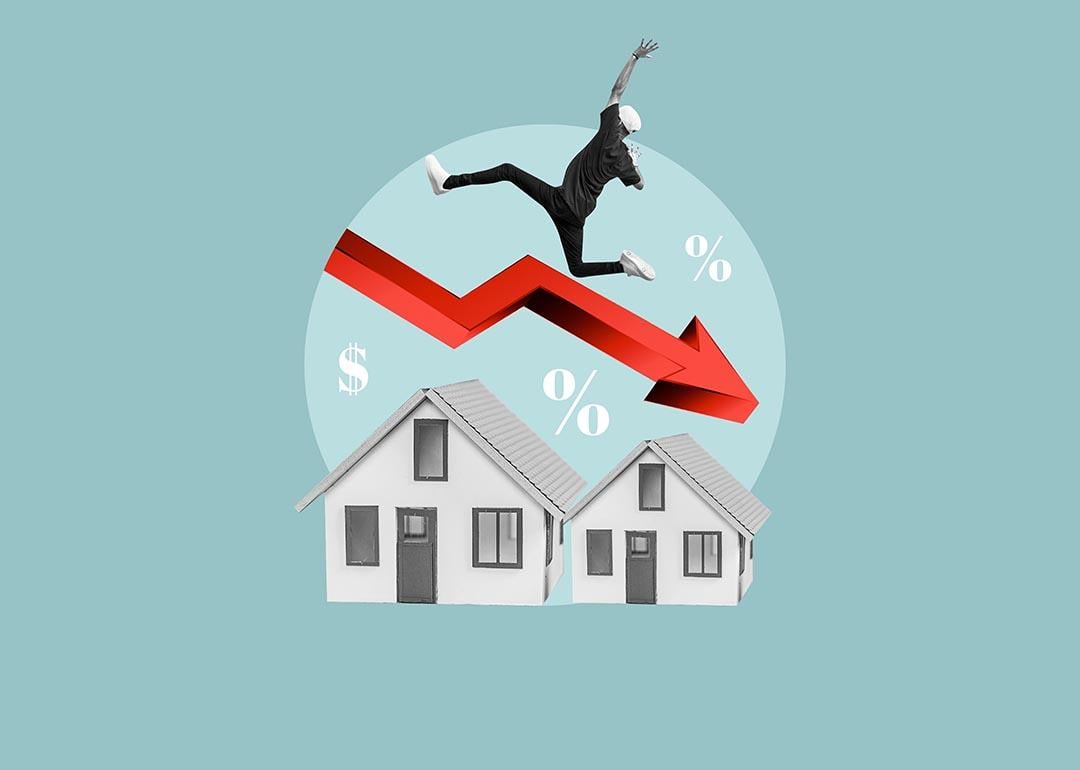
Housing market sees price cuts, but experts say more are needed
This story was produced by Benzinga and reviewed and distributed by Stacker Media.
Housing market sees price cuts, but experts say more are needed
As the U.S. housing market cools following a sour jobs report, data suggests a growing trend of price cuts across the country. However, Benzinga reports some industry experts argue that more reductions are necessary to restore balance and affordability to a market marred by high prices, rates, and low inventory.
According to a new report from Realtor.com, the share of home listings with price reductions reached a two-year high in July, increasing by 3.4% compared to the previous year. That brings the total share of listings with price cuts to 18.9%, surpassing pre-pandemic levels.
Ralph McLaughlin, senior economist at Realtor.com, attributes the trend to a combination of factors. "First, rates remain higher than expected, which means there is less buyer activity," McLaughlin said. "Second, the prospect of lower mortgage rates coming this fall may have induced some buyers to wait."
The report found regional variations in price reduction trends. Of the 50 largest metro areas, 47 saw an increase in the share of price reductions compared to last July. Tampa, FL, led the pack with a 9.7% increase, followed by Charlotte, NC, at 9.5% and Phoenix at 9.4%.
While the price cuts may offer hope for potential buyers sidelined by affordability concerns, some industry watchers argue that the current adjustments fall short of what's needed to meaningfully improve market conditions.
Nick Gerli, CEO of Reventure Consulting, says that more price drops are necessary to reinvigorate buyer demand. "One thing that people in the housing market need to get prepared for is no bounce back in buyer demand from lower rates," Gerli said on X, formerly Twitter.
Gerli said that despite recent declines in mortgage rates to around 6.4% (the lowest level in 16 months), the typical monthly house payment for buyers remains around $2,700. He argues that to see a real return of buyers to the market, the monthly payment needs to drop to the $2,100-$2,200 range.
"In reality, prices need to drop 15% and mortgage rates need to go to 5.5% to bring buyers back," Gerli said. That decline, he calculates, would lower the monthly house payment to $2,100, bringing the mortgage payment-to-income ratio down from its current 40% to a more sustainable 32%, in line with the long-term 40-year average.
Gerli's perspective challenges the notion that modest price cuts and slight decreases in mortgage rates will be enough to reinvigorate the market. Gerli suggests that sellers, realtors, and mortgage lenders may be in for a shock if they expect buyers to return en masse without better improvements in affordability.
The disconnect between seller expectations and market realities is evident in the experiences of real estate professionals on the ground. Sam Fitz-Simon, a real estate agent in Danville, CA, notes the difficulty in conveying the new market reality to sellers. "Telling them that they missed the mark and have to settle for less is never a fun conversation," Fitz-Simon told Realtor.com.
Bruce Ailion, a real estate professional and attorney with Re/Max Town & Country, echoes the sentiment. "Even when presented with the most recent pricing statistics, many sellers were optimistic their home would sell for more than their neighbor's home did last summer," Ailion said to Realtor.com. "The new reality begins to sink in only after a few showings and 20 days on the market with no offers."
As the market adjusts, the gap between seller expectations and buyer affordability remains challenging. While price cuts are becoming more common, executives argue they are insufficient to bring the market back into balance without more dramatic corrections.
For now, many potential buyers appear to be adopting a wait-and-see approach. With the Federal Reserve expected to potentially cut rates as early as September and the upcoming election adding another layer of uncertainty, the housing market's path forward remains far from clear.
As the correction plays out, industry watchers like Gerli will monitor key indicators like the mortgage application index, which he notes is still "scraping at the lowest level in 30 years," down 13% year over year and nearly 50% from pre-pandemic levels.
The coming months will likely prove important in determining whether the current trend of price cuts will accelerate to meet the level some experts believe is necessary or if the market will find a new equilibrium through more gradual adjustments.



